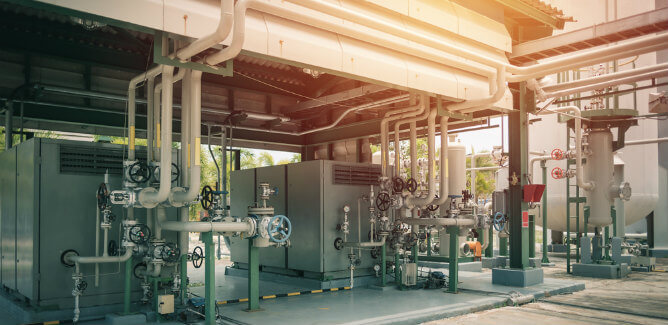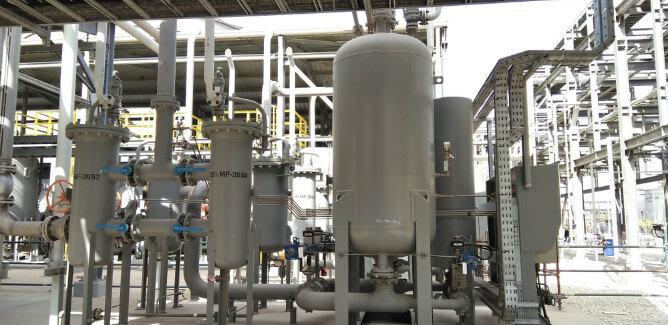
Air Compressor CFM Chart for Sizing Equipment
Ensuring your system has the right capacity starts with understanding air compressor sizing. At the core of this sizing process is a critical metric: CFM, or Cubic Feet per Minute. The air compressor CFM chart is a simple way to match your equipment’s demand with the right compressor output.
What is CFM in Air Compressors?
CFM stands for Cubic Feet per Minute and is a standard measurement of airflow. In the context of compressed air systems, it indicates the volume of air an air compressor can deliver at a given pressure level. It’s essential to differentiate between:
- CFM: Actual volume of airflow delivered.
- SCFM (Standard CFM): Airflow standardized to specific atmospheric conditions (typically 68°F, 14.7 psi, and 36% humidity).
Another critical term is PSI (Pounds per Square Inch), which measures air pressure. While CFM indicates airflow, PSI shows how forcefully that air is delivered. Most industrial applications require compressors capable of maintaining both CFM and PSI within tight tolerances to meet operational needs.
Why Proper CFM Sizing is Critical
Undersizing or oversizing your air compressor can result in significant operational inefficiencies:
- Undersized compressors may lead to pressure drops, incomplete tool operation, and overworked compressors prone to premature failure.
- Oversized compressors increase energy consumption, elevate operational costs, and may lead to maintenance challenges due to frequent cycling.
For process industries, improper sizing can compromise safety systems, affect production quality, and increase system downtime.
Common Industrial Equipment & Their CFM Requirements
Every piece of pneumatic equipment has unique airflow demands. Below are average CFM requirements for common tools:
- Impact Wrenches (1”): 10-15 CFM
- Pneumatic Drills: 4-8 CFM
- Sandblasters: 10-100 CFM
- Air Hoists: 30-50 CFM
- Air Cylinders & Process Pumps: Varies widely based on bore size and stroke frequency
NiGen supports industries such as oil & gas, refining, and petrochemicals where exact airflow requirements are mission-critical. Regardless of it you’re operating pneumatic valves or driving control systems, accurate CFM measurement is always priority.
Air Compressor CFM Sizing Chart
Note: These values are general guidelines. Always consult your equipment manual or contact NiGen for application-specific sizing.
Equipment Type |
Average CFM Requirement |
Operating Pressure (PSI) |
| Impact Wrench (1”) | 10-15 CFM | 90-100 PSI |
| Jackhammer | 60-90 CFM | 90 PSI |
| Sandblaster | 10-100+ CFM | 100-120 PSI |
| Air Hoist | 30-50 CFM | 90-100 PSI |
| Paint Sprayer | 4-12 CFM | 40-60 PSI |
Using an air compressor CFM chart can assist maintenance managers and engineers in ensuring system compatibility and performance.
How to Calculate Your Total CFM Requirement
To determine your total system demand, consider the number of tools operating simultaneously, their duty cycles, and a safety buffer. Use the following steps:
- List all equipment with individual CFM needs.
- Estimate the % of time each tool operates (duty cycle).
- Multiply CFM by duty cycle for each tool.
- Sum all adjusted CFM values.
- Add a 25-30% safety margin.
Example:
- 3 impact wrenches at 10 CFM, 50% duty cycle = 3 x 10 x 0.5 = 15 CFM
- 1 sandblaster at 50 CFM, 100% duty cycle = 50 CFM
- Total = 65 CFM
- With 30% buffer = 65 x 1.3 = 84.5 CFM

How to Match Compressor Designs with Airflow Demands
Different types of air compressors are available in several designs:
- Reciprocating compressors: Ideal for intermittent use and small-scale operations.
- Rotary screw compressors: Perfect for continuous use and high-volume airflow.
- Centrifugal compressors: Suited for ultra-high-capacity, process-critical applications.
NiGen offers tailored air compression solutions, including portable and skid-mounted units, to meet diverse operational demands.
Additional Factors in Air System Design
Beyond CFM, consider the following when sizing and selecting an air compressor:
- Altitude & ambient conditions: Higher elevations and high temperatures reduce compressor efficiency.
- Moisture management: Integrated air dryers (like refrigerated or desiccant types) reduce condensation and corrosion.
- Storage capacity: Air receiver tanks stabilize system pressure and reduce compressor cycling.
- Pressure drop considerations: Proper piping and layout reduce losses between the compressor and point-of-use.
Expertly Sized Air Compressor Packages from NiGen
With decades of experience serving industrial operations, NiGen provides reliable, efficient, and expertly sized industrial air compressors. Our engineers help you match your equipment needs with the right airflow and pressure specs, backed by rental, customization, and on-site support options.
You can always trust NiGen for mission-critical compressed air solutions that power your productivity. Reach out to our team today.
